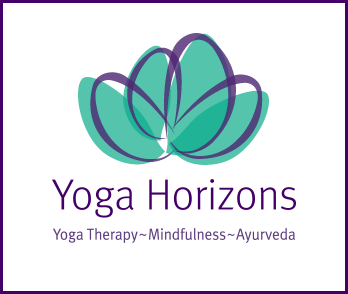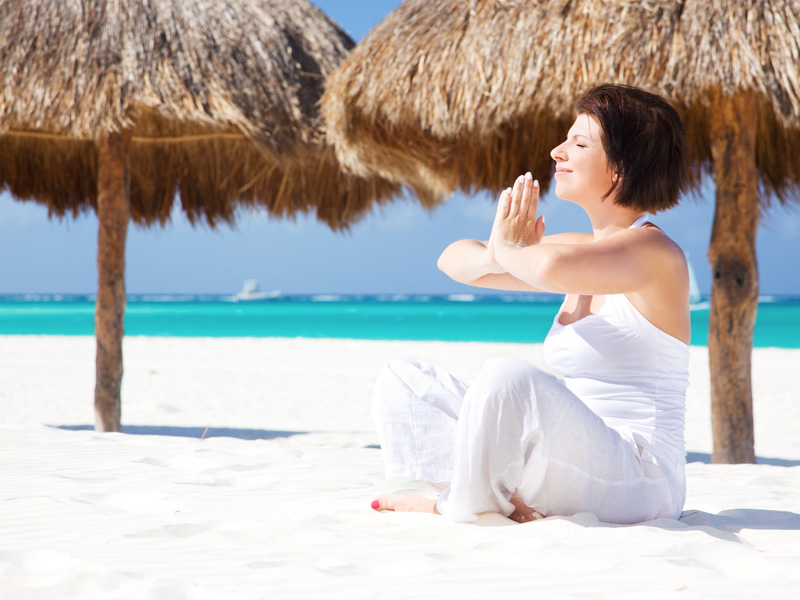Most people get headaches from time to time. Here is an article I found by Judith Lasater which might help. Judith Hanson Lasater, Ph.D., Physical Therapist, has been teaching yoga since 1971. She trains students and teachers throughout the United States as well as abroad, is one of the founders of Yoga Journal magazine, and is president of the California Yoga Teachers Association. She has written eight books.
Her article: Long division in the third grade on a hot spring afternoon. That was my first experience of a headache, followed not long after by the time I fell on my head trying to do handstands in my family’s den. Without a doubt, if you are human you have experienced a headache. It may be the excruciating pain of a migraine (a special type of headache involving the brain in a way that most headaches do not) or just the aftereffect of too much wine. It may be a reaction to a food or too much sun, or it may be caused by a need for glasses. However, the good news is that the overwhelming number of headaches are related to tension, especially in the neck, and yoga practice can offer solutions.
It’s All in the Neck
One of the most important things we can do for headaches is prevent them. And one of the best ways to prevent headaches is to maintain good head and neck posture. This is harder than it sounds. The key is the position of the neck, also called the cervical spine, which extends from the base of the skull to the top of the shoulders. It is made up of seven vertebrae, and the cushioning discs between them are shaped to maintain an arch on the back, or posterior, side. The neck is the most mobile of all the spinal segments, but it is also the least stable.
There are a large number of muscles that are normally used to keep the head stable above the shoulders and that turn it from side to side as needed. One of the most well-known of these muscles is the trapezius. (The word “trapezius” means “shawl” and the muscle roughly covers the shoulders and back, where a shawl would rest.) The upper trapezius is located at the top of your shoulders; the fibers originate at the base of the skull and run downward and outward to the outer tip of the upper shoulder. It is often one of the tightest muscles in the body, and it is the one a friend or spouse might frequently rub to help you release tension after a hard day.
Perhaps one of the reasons this muscle is often so tense is related to its “job assignment.” When the upper trapezius contracts it elevates the shoulders toward the ears. This is useful when we are reaching high overhead; we also use the upper trapezius to hold a purse strap onto one shoulder by slightly elevating that shoulder. But one of the hallmarks of tension is to constantly hold the shoulders slightly up, thus engaging the upper trapezius muscles too much of the time and causing them to be sore and tight. When we can learn to drop the shoulder blades down the back, the upper trapezius fibers are stretched. And unless we do, tension in this area can contribute to poor head and neck posture and thus to tension headaches.
Try this experiment. Sit in a rather slumped but typically-seen position, and slightly elevate your shoulders. Hold this pose and notice how the head position changes—the chin juts forward, and tension spreads into the back of the neck. Imagine being in this “asana” all day for years and even decades, and you can understand how poor posture can contribute to neck tension and headaches. Headaches originating from this area can also result from the compression of the nerve that exits the cervical spine between the skull and the first vertebrae. Compression here, created in part by poor neck posture, can cause radiating pain into the head and back of the eye socket.
Because we are always practicing an “asana,” the only question is, is it a conscious or unconscious one? By consciously training ourselves to carry the head over the body and dropping the shoulder blades down as much as possible, we can go a long way toward preventing headaches. Here are some practices which can teach good posture and which can help to relieve a headache once it has begun.
Practicing for a Headache-Free Life
It turns out that your mother was right—good posture is important. To stand well, begin by placing the feet hip-width apart, with the middle toe pointing exactly forward. Make sure that the top of your thighs are moving backward and that the tailbone is NOT tucked but moved slightly backward as well. The breastbone should be in a diagonal line, so that the bottom of this bone is moving away from the body, the shoulder blades dropped, and the eyes gazing straight ahead. If you find this difficult, try balancing a book on your head. This old-fashioned trick actually does improve posture. Once you have established this pose, called tadasana, or mountain pose, try to maintain it standing, walking, and sitting. It will create the least amount of fatigue in the neck muscles and will thus help to reduce the occurrence of headaches.
Another asana which can help reduce tension in the neck is viparita karani, or elevated-legs-up-the-wall pose. This is practiced by elevating the pelvis while the legs are supported by a wall. This pose should be avoided by pregnant or menstruating women, and by those suffering from pressure in the eye, detached retina, heart problems, or hiatus hernia. To practice this pose, place folded blankets or a bolster about 10 inches from the wall with another long-folded blanket at 90 degrees to the bolster. Sit on the edge of the bolster with one shoulder near the wall. Carefully roll back, simultaneously swinging your legs up the wall. The bolster should comfortably support the lower back. Make sure the chin is dropped slightly, the arms comfortably at your side, and the breathing soft and normal. Remain for as long as 10 minutes with the eyes covered. To come out, roll carefully to the side and slowly get up, using your arms. This pose stretches the back of the neck and the upper back, and it lowers blood pressure.
The supported bridge pose can be useful for both preventing as well as reducing the pain of headache. To practice this pose you will need at least two yoga bolsters or several couch cushions. Line them up as is shown in the photo and sit astride them. With an exhalation, gradually lie back so that your outer shoulders lightly touch the floor while the base of your neck does not. Position your arms comfortably at your side. The bolsters should support the length of your body so that you can rest as you lie back. If your lower back is uncomfortable, try bending your knees and placing your feet either on the props or on the floor. This pose will stretch the back of the neck and open the chest to facilitate deep breathing. Stay in the pose for 5 to 10 minutes. Come out by rolling carefully to the side, lying still for a few moments, and slowly getting up by using your arms to help.
If you are in the midst of a headache, try wrapping the head before you lie down in either viparita karani or in shavasana (corpse pose), a simple relaxation pose. Use an elastic bandage about four inches wide, commonly found in drugstores. Be careful not to wrap it over the eyes in a way that creates pressure on the eyeballs. The bandage should feel snug and pleasant but not overly constricting. Begin by setting up for a relaxation pose. Place a blanket on the floor or use a carpeted surface. Sit on the floor and place a small pillow or folded blanket behind you for head and neck support, and a rolled blanket or pillow under your knees. Remain sitting in order to wrap the bandage. Keep it rolled up and begin at the base of the neck. (You will probably want to discard the metal clips that come with it.) Slowly unwind the bandage as you wrap it from the base of the neck over the cheekbone, then the eyes, forehead, and back around to the starting point. Continue to wrap the bandage until it is used up, and then tuck the end into the already wrapped part. (Try to make the tuck slightly to the side of the head so that the end of the bandage will not create a bump on the back of your head as you lie down.) Once you have wrapped the bandage, lie carefully down in shavasana and relax for 15 to 20 minutes.
I often tell students who suffer from headaches to practice the technique of “opening up” to the headache as they begin to relax. Strange as this may sound, let yourself feel the headache. Part of the tension of a headache is created by trying not to feel it. Once you lie down and allow yourself to feel the headache it may get worse initially, but it will gradually begin to subside and perhaps vanish altogether.
Another technique which may be helpful is to imagine your hands getting warmer and warmer while you are relaxing in shavasana. It might help to visualize that you are lying in such a way that only your hands are in the sun, or try imagining that you are submerging your hands in warm water. You can actually learn to raise the temperature in the hands. When you do there will be a reflex relaxation in the blood vessels in the head, and this can help to prevent migraines.
Headaches are virtually universal. Improved neck posture and simple relaxation poses, however, are powerful tools for helping you live a life in which they become increasingly rare.

